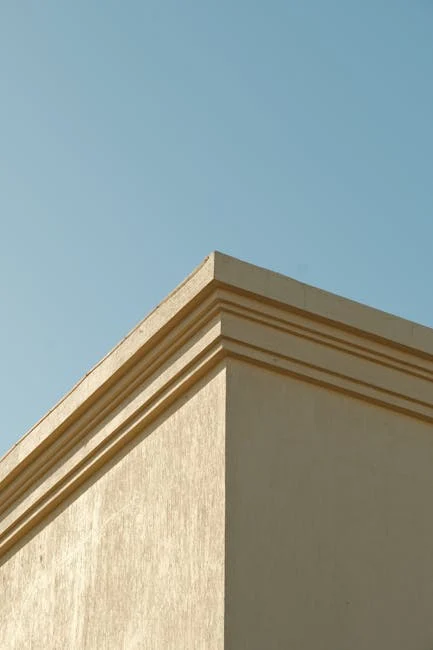Designing with Geometry: Using Angles and Edges in a Clean
Introduction
In the world of design, where aesthetics and functionality intertwine, geometry plays a pivotal role. Specifically, the strategic use of angles and edges can elevate a design from mundane to captivating, particularly within the realm of clean and minimalist aesthetics. This article explores how designers leverage these geometric elements to create visually appealing, balanced, and modern designs.
Geometric Principles in Clean Design
The Power of Sharp Angles
Sharp angles, often associated with modernity and energy, can inject a sense of dynamism into otherwise static designs. Consider these applications:
- Logo Design: A sharply angled logo can convey innovation and cutting-edge technology.
- Website Layout: Angled section dividers can create visual interest and guide the user’s eye.
- Typography: Fonts with sharp serifs or angled terminals project a sense of sophistication and strength.
The Subtlety of Oblique Angles
Oblique angles, those that are neither right angles nor multiples of 90 degrees, offer a softer, more nuanced approach. They can introduce a sense of movement and playfulness without sacrificing the overall clean aesthetic.
- Illustration: Subtle oblique angles in illustrations can add depth and perspective.
- User Interface: Buttons or icons with slightly angled edges can provide a tactile feel and enhance usability.
- Data Visualization: Using angled lines and charts can improve readability and engagement.
Edges: Defined vs. Softened
The treatment of edges is crucial in determining the overall feel of a design. Sharp, well-defined edges convey precision and control, while softened edges create a more welcoming and organic impression.
- Hard Edges: Ideal for conveying strength, stability, and technological advancement. Think of the sharp lines often found in architectural renderings or tech product design.
- Soft Edges: Rounded corners and beveled edges offer a friendlier, more approachable aesthetic. This is common in UI design, where it contributes to a comfortable user experience.
Creating Balance with Geometric Forms
Clean design often relies on geometric forms (squares, circles, triangles) to establish balance and harmony. Angles and edges play a critical role in defining these forms and their relationship to one another.
- Symmetry: Creating symmetrical compositions around a central axis provides a sense of order and stability.
- Asymmetry: Deliberate asymmetry, using contrasting angles and edges, can create a more dynamic and engaging design, but requires careful balancing.
- The Golden Ratio: Applying the golden ratio (approximately 1.618) to the placement of elements and the proportions of shapes can create visually pleasing compositions.
Applications Across Design Disciplines
Web Design
In web design, angles and edges can be used to define sections, create visual hierarchy, and guide the user’s eye. Clean, geometric layouts are often favored for their clarity and ease of navigation.
Graphic Design
Logos, brochures, and posters can benefit from the strategic use of angles and edges to convey a specific message or brand identity. Geometric typography and illustrations are powerful tools in this domain.
Interior Design
From furniture design to spatial arrangements, angles and edges play a vital role in creating modern and minimalist interiors. Clean lines, geometric patterns, and a focus on functionality are hallmarks of this approach.
Conclusion
Mastering the art of designing with geometry, particularly the thoughtful application of angles and edges, is essential for creating clean, modern, and impactful designs. By understanding the principles discussed in this article, designers can effectively harness these elements to achieve visual balance, convey desired emotions, and ultimately create designs that resonate with their audience.














Post Comment